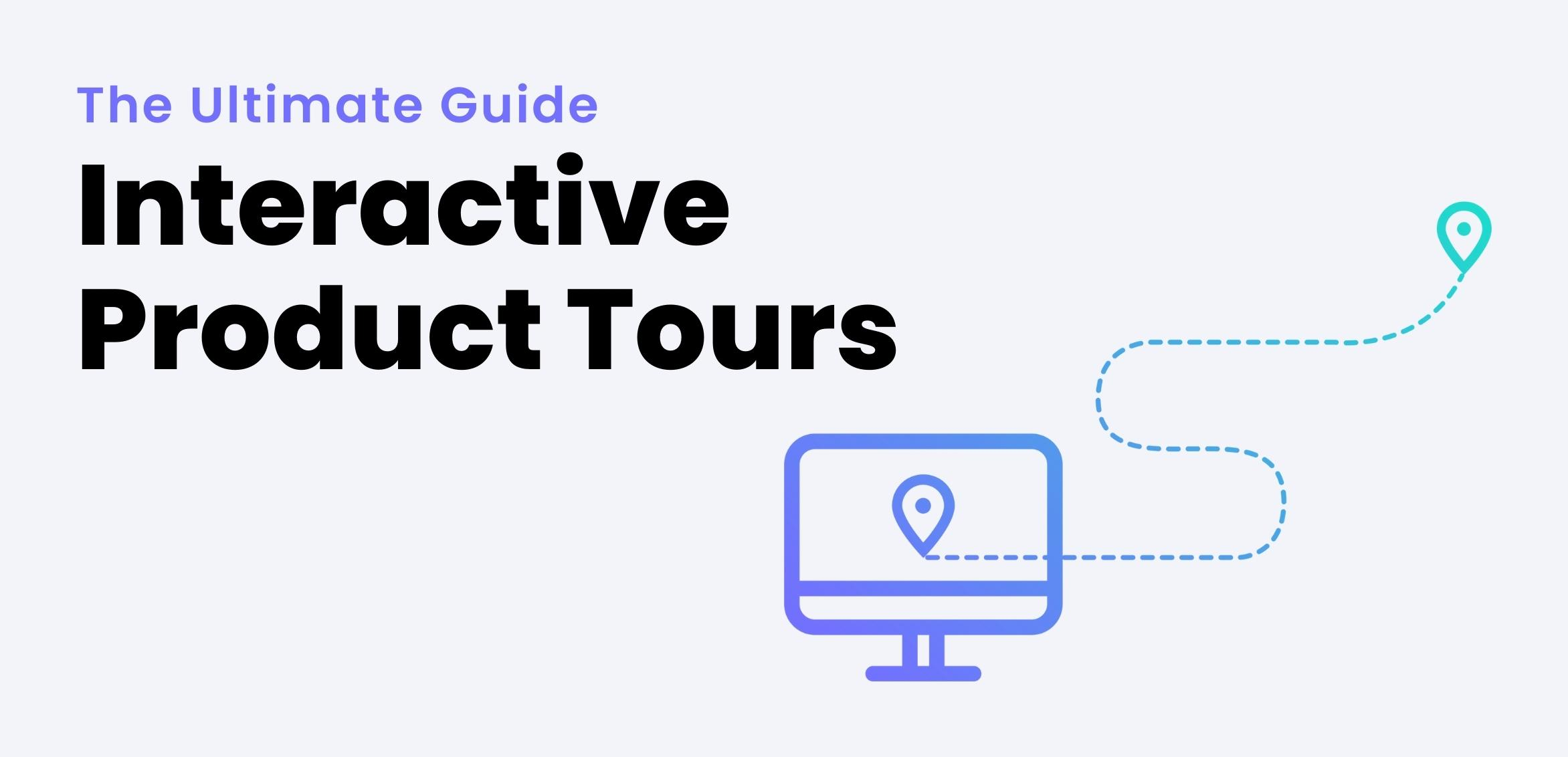Accelerate deals and increase win rates with the leading enterprise demo platform.
Fueling PLG: The Ultimate Guide To Interactive Product Tours

February 13, 2025
Table of Contents
Welcome; thanks for stopping by to check out Reprise’s Ultimate Guide to interactive product tours. This guide will clearly explain what interactive product tours are, their role in Product-Led Growth (PLG), and what happens when you start using them.
By the way, if you aren’t familiar with PLG, we recommend reading The Ultimate Guide to Product-Led Growth (PLG) first and then heading back over here. But the short and sweet definition is that PLG happens when companies use their product to sell their product.
Table of Contents
What Is an Interactive Product Tour?
What Makes a Product Tour “Interactive”?
How Interactive Product Tours Amplify Product-Led Growth (PLG).
How Marketers Can Use Interactive Product Tours.
Why Interactive Product Tours Are a Marketer’s Best Asset.
What Happens Once Marketing Starts Using Interactive Product Tours?
 What Is an Interactive Product Tour?
What Is an Interactive Product Tour?
Interactive product tours (also known as guided demos) give prospects a guided walkthrough of your software. Delivering a product experience that can feel (almost) as immersive and persuasive as your original product environment, but on a smaller scale and in a controlled environment—free of product glitches, bugs, or errors.
These self-guided product tours work exceptionally well as a presale or marketing strategy because they give your buyers what they want—the freedom to explore and interact with your product independently. While your customer is self-educating, you can direct their attention to your software’s “wow” moments’ to ensure they experience the value of your solution before losing interest.
Tours can be customized for a broader audience, while personalized live sales demos speak to specific prospects. But this doesn’t mean product tours aren’t highly customizable! Marketers can create interactive product tours that appeal to a particular buyer persona, vertical market, use case, etc.
 What Makes a Product Tour “Interactive”?
What Makes a Product Tour “Interactive”?
At one point, the only way marketers could create and share a product tour was in video or screenshot formats—static content that passively engaged prospects. Today, marketers can generate dynamic, interactive product tours that actively engage viewers.
For example, suppose a marketer used Reprise’s no-code demo creation platform. With Reprise, they could develop an interactive product tour that included pop-up guides, animated buttons, and even a virtual tour guide. It’s important to note that not every demo creation tool is the same.
Some are made exclusively for sales teams that need to create demos but don’t have interactive product tour capabilities. Others help marketers create product walkthroughs but are unable to generate interactive demos for live sales calls.
You want a demo platform that can create for both, and here’s why:
- If the interactive product tour on your website doesn’t match up with the custom demo your prospect sees later, they won’t trust that you’ve given them an authentic product experience.
- Why buy two different software solutions when you can buy one?
 How Interactive Product Tours Amplify Product-Led Growth (PLG).
How Interactive Product Tours Amplify Product-Led Growth (PLG).
An interactive product tour can convert a prospect into a customer. Especially when the tour’s interactive elements do a good job of preemptively answering product questions, overcoming objections, and directing viewers to the software’s “take my money now” moments.
But most of the time, marketing teams build interactive product tours to move prospects further down the sales funnel where deeper, richer product experiences await them.
For example, an interactive product tour can convince a product-saturated audience that your freemium product is even worth trying out. And because freemium products don’t come pre-populated with user information, tours are an effective way to decrease the user’s time-to-value by showcasing the software’s full potential with a focused experience.
But use an interactive product tour to lead better-qualified prospects to a custom demo experience? Now that’s mwah— chef’s kiss! It’s truly the ultimate PLG matchup.
Imagine that you’ve watched a great movie preview, and it piqued your interest enough that you bought tickets to the full show. Except this movie? It was made just for you. It was filmed in your hometown, the hero has your name, and the villain is the porch pirate that keeps stealing your Amazon packages. The movie’s not only enjoyable to watch, it’s so highly personalized that you forget you’re not actually inside of it.
That’s what it’s like when you use an interactive product tour to preview the main feature, a custom demo experience.
 How Marketers Can Use Interactive Product Tours.
How Marketers Can Use Interactive Product Tours.
Once you’ve made one (or more) of these awesome, interactive product tours, where do you use them? At customer touchpoints:
- Your company website.
- Landing pages that highlight new features, version rollouts, etc.
- Share links to product tours in email campaigns and on social channels.
Interactive product tours are a key marketing resource, but they also have a broader organizational value. Your company can use interactive product tours to:
- Onboard new employees
- Provide product education
- Get internal teams excited about new product features and offerings.
Sales teams can also share these product walkthroughs with their internal product champions. Arming them with a product experience that’s easily shareable and generates interest among key decision makers.
Pro Tip: Create an interactive demo library — a collection of interactive product tours that showcase your product’s various features, functions, and use cases that prospects can explore on their own time.
 Why Interactive Product Tours Are a Marketer’s Best Asset.
Why Interactive Product Tours Are a Marketer’s Best Asset.
Does it feel like the product marketing and demand gen tactics that worked so well for so long—just don’t anymore? If so, you’re not wrong. According to HubSpot Research, Customer Acquisition Costs (CAC) have risen more than 60% over the past five years.
There are a few reasons it’s getting harder to capture and convert prospects.
- Your Content Isn’t Getting Through. Your prospects are overwhelmed with the sheer volume of marketing content out there. They tried to drink from the water fountain of knowledge and found the fire hose turned on instead.
- Buyer Trust Has Eroded. Using static content to convey the awesomeness of your product is going to be met with high skepticism. More hard facts from HubSpot:
- 55% of people no longer trust the companies they buy from.
- 65% don’t trust company press releases.
- 71% don’t trust social media ads.
So what can marketers do to lower CAC and regain trust? Start letting customers see the product for themselves instead of just telling them how great it is.
Interactive product tours help marketers achieve this. They give your audience what they want most (immediate access to your product) and reduce prospects’ time to realize its value.
 What Happens Once Marketing Starts Using Interactive Product Tours?
What Happens Once Marketing Starts Using Interactive Product Tours?
This is my favorite part of the guide because it’s where I get to tell you about all the amazing things that happen once marketers start using interactive product tours.
- Engagement improves. A lot. Prospects are more likely to interact with you once they’ve experienced your product. They can trust that the conversations will be productive and worth participating in.
- Marketing Qualified Leads (MQLs) convert faster. When your nurture strategy starts with an interactive product tour, your leads convert to MQLs faster. Marketing and sales teams that built product tours (and demos) with Reprise saw a 60% improvement in their pipeline and lead conversion rate.*
- Time-to-value decreases. The MQLs you share with sales will close faster because the user has already seen the value your product delivers, pictured themselves using it, and experienced its conversion moments.
- Your vertical reach expands. Creating and sharing multiple, verticalized interactive product tours demonstrates your product’s value to existing verticals and helps capture the attention of new ones.
- You give buyers what they’re looking for. According to DemandGen’s B2B Buyer Behavior Study, 84% of B2B buyers say that the buying experience is just as important as the product or services being sold.
- ROI dramatically improves. When Reprise customers used our demo creation platform to generate interactive product tours and demos, they saw a 323% improvement in ROI.*
*Results are from The Total Economic Impact™ Of The Reprise Platform, a commissioned study conducted by Forrester Consulting on behalf of Reprise in 2022.
The TLDR on Interactive Product Tours
- Delivers a guided product experience that converts prospects or motivates them to ask for more.
- Increases engagement, extends vertical reach, improves ROI, and produces high-quality MQLs faster.
- The MQLs you gain with product tours are more qualified and delivered to sales with a shorter time-to-value.
- Build your product tour with a demo creation platform that supports sales and marketing—not one or the other.
- Interactive product tours also improve internal communication, train teams, and help sales convert.
We hope this guide has been helpful for you! If you would like to continue to learn more about interactive product tours, you can learn more here.







